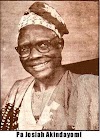James [Jāmez]-supplanter.
1. The son of Zebedee, and the elder brother of John, and one of the Twelve (Matt. 4:21; Matt 10:2; Matt 17:1; Mark 1:19, Mark 1:29; Mark 3:17; Mark 5:37; Mark 9:2; Mark 10:35; Mark 10:41; Mark 13:3; Mark 14:33; Luke 5:10; Luke 6:14; Luke 8:51; Luke 9:28, Luke 9:54; Acts 1:13; Acts 12:2). From the foregoing references several facts emerge:
James' father Zebedee, was a Galilean fisherman and prosperous, since he employed servants to assist in the management of his boats.
Zebedee had a house in Jerusalem and was known as a friend of the High Priest, Caiaphas, and his household. This would mark Him as a man of social position.
His mother's name was Salome, whom tradition says was a sister of the Virgin Mary, which may help to throw light upon the relation of her sons to the Master. This would also make James a cousin to Jesus after the flesh.
James worked in partnership with his father and brothers and was busy with his boats and nets when the call of Christ reached him.
His name is coupled with his brother John in the lists of the apostles, which could mean that when they were sent forth two by two, James and John would be paired. Evidently they were men of like spirit and disposition and received from Jesus the title "Sons of Thunder."
He was on terms of special intimacy with Christ, although he never attained the distinction of his brother John.
His life came to an untimely end when he was martyred by Herod Agrippa. The cup and the baptism of pain and death were his. Seventeen years passed between his call to service and his death. He was the second of the martyrs and the first of the apostles to give his life for Christ.
We have no word from his pen nor word he spoke unless Acts 4:24-30 be an exception, but James was content to be a disciple. He never sought fame, power, a great name. He had no ambition to be first.
2. The Lord's brother (Matt 13:55; Mark 6:3; Acts 12:17; Acts 15:13; Acts 21:18; 1 Cor 15:7; Gal 1:19; Gal 2:9, Gal 2:12; Jas 1:1). Acute controversy has raged around whether this James was an actual brother of Christ and also one of the Twelve.
Because of his relationship to Christ we deem it necessary to devote a little more attention to this honorable James. How exactly was he related to the Lord? There are some writers who affirm that there are only two persons by the name of James in the New Testament and that the one we are presently considering was the son of Alphaeus and Mary the sister of our Lord's mother. Various explanations have been given of this James.
He was a child of Joseph by a former marriage. Those like the Roman Catholics, who argue for the perpetual virginity of Mary, are against our Lord having any natural relatives apart from His mother.
The word "brother" or "kinsman" is used loosely, and means "cousin," according to Jewish usage. If he was a son of the virgin Mary's sister, then he would be our Lord's cousin, or "cousin-brother," as the Indians express it.
He, being the natural son of Joseph and Mary after their marriage, was actually our Lord's half-brother. The language of the passages cited under this James indicates that he had a relationship with Christ within rather than without the immediate family of Joseph and Mary. In the remonstration with Christ concerning His preaching, the whole circumstance points to James as being one of Mary's sons (Matt 12:46-50). The facts are these:
I. He is spoken of as being among the sisters and brothers of Christ (Matt 13:55, Matt 13:56; John 2:12; John 7:3, John 7:10).
II. He was not a believer during our Lord's life. Along with the other children of Joseph and Mary, James did not accept the Messiah-ship of Jesus (Luke 7:20, Luke 7:21; John 7:5). There can be no doubt, however, that he did not remain unmoved by the goodness, unselfishness and example of Christ. Living with Him for almost thirty years must have left its impact upon James.
III. He was a witness of Christ's resurrection (1 Cor. 15:7). It would seem as if James was won to faith by a special manifestation of the risen Lord. Seen of James! Paul would only know of one "James," the one often alluded to in the Acts of the Apostles. The result of that glorious sight and conversation transformed James into a disciple and a believer. It is after this experience that we find "the brethren of the Lord" joined with "the apostles" and "the women" assembled together in the upper chamber (Acts 1:14).
IV. He became a pillar of the Church at Jerusalem, rising to eminence (Acts 12:17; Acts 15:4-34; Acts 21:18, Acts 21:19; Gal 2:1-10).
V. He became known for his piety and was named "James the Just." Tradition has it that he was a Nazarite from his mother's womb, abstaining from strong drink and animal food and wearing linen. We are told of his strict adherence to the law (Acts 21:17-26; Gal 2:12).
VI. He was the writer of the epistle bearing his name, which has always been attributed to "James the Just." But such was his character that he styled himself not as the brother, but only the servant or "slave" of the Lord Jesus Christ. His epistle gives us an admirable summary of practical duties incumbent upon all believers.
VII. He was a man who believed in the power of prayer, as evidenced by the space he devotes to it in his epistle. Because of his habit of always kneeling in intercession for the saints, his knees became calloused like a camel's; thus he became known as "The Man with Camel's Knees."
VIII. He was cruelly martyred by the Scribes and Pharisees, who cast him from the pinnacle of the Temple. As the fall did not kill him, his enemies stoned him, finally dispatching him with a fuller's club (see Matt 4:5; Luke 4:9). Across from the Valley of Jehoshaphat, there is a sepulcher called "The Tomb of St. James."
1. The son of Zebedee, and the elder brother of John, and one of the Twelve (Matt. 4:21; Matt 10:2; Matt 17:1; Mark 1:19, Mark 1:29; Mark 3:17; Mark 5:37; Mark 9:2; Mark 10:35; Mark 10:41; Mark 13:3; Mark 14:33; Luke 5:10; Luke 6:14; Luke 8:51; Luke 9:28, Luke 9:54; Acts 1:13; Acts 12:2). From the foregoing references several facts emerge:
James' father Zebedee, was a Galilean fisherman and prosperous, since he employed servants to assist in the management of his boats.
Zebedee had a house in Jerusalem and was known as a friend of the High Priest, Caiaphas, and his household. This would mark Him as a man of social position.
His mother's name was Salome, whom tradition says was a sister of the Virgin Mary, which may help to throw light upon the relation of her sons to the Master. This would also make James a cousin to Jesus after the flesh.
James worked in partnership with his father and brothers and was busy with his boats and nets when the call of Christ reached him.
His name is coupled with his brother John in the lists of the apostles, which could mean that when they were sent forth two by two, James and John would be paired. Evidently they were men of like spirit and disposition and received from Jesus the title "Sons of Thunder."
He was on terms of special intimacy with Christ, although he never attained the distinction of his brother John.
His life came to an untimely end when he was martyred by Herod Agrippa. The cup and the baptism of pain and death were his. Seventeen years passed between his call to service and his death. He was the second of the martyrs and the first of the apostles to give his life for Christ.
We have no word from his pen nor word he spoke unless Acts 4:24-30 be an exception, but James was content to be a disciple. He never sought fame, power, a great name. He had no ambition to be first.
2. The Lord's brother (Matt 13:55; Mark 6:3; Acts 12:17; Acts 15:13; Acts 21:18; 1 Cor 15:7; Gal 1:19; Gal 2:9, Gal 2:12; Jas 1:1). Acute controversy has raged around whether this James was an actual brother of Christ and also one of the Twelve.
Because of his relationship to Christ we deem it necessary to devote a little more attention to this honorable James. How exactly was he related to the Lord? There are some writers who affirm that there are only two persons by the name of James in the New Testament and that the one we are presently considering was the son of Alphaeus and Mary the sister of our Lord's mother. Various explanations have been given of this James.
He was a child of Joseph by a former marriage. Those like the Roman Catholics, who argue for the perpetual virginity of Mary, are against our Lord having any natural relatives apart from His mother.
The word "brother" or "kinsman" is used loosely, and means "cousin," according to Jewish usage. If he was a son of the virgin Mary's sister, then he would be our Lord's cousin, or "cousin-brother," as the Indians express it.
He, being the natural son of Joseph and Mary after their marriage, was actually our Lord's half-brother. The language of the passages cited under this James indicates that he had a relationship with Christ within rather than without the immediate family of Joseph and Mary. In the remonstration with Christ concerning His preaching, the whole circumstance points to James as being one of Mary's sons (Matt 12:46-50). The facts are these:
I. He is spoken of as being among the sisters and brothers of Christ (Matt 13:55, Matt 13:56; John 2:12; John 7:3, John 7:10).
II. He was not a believer during our Lord's life. Along with the other children of Joseph and Mary, James did not accept the Messiah-ship of Jesus (Luke 7:20, Luke 7:21; John 7:5). There can be no doubt, however, that he did not remain unmoved by the goodness, unselfishness and example of Christ. Living with Him for almost thirty years must have left its impact upon James.
III. He was a witness of Christ's resurrection (1 Cor. 15:7). It would seem as if James was won to faith by a special manifestation of the risen Lord. Seen of James! Paul would only know of one "James," the one often alluded to in the Acts of the Apostles. The result of that glorious sight and conversation transformed James into a disciple and a believer. It is after this experience that we find "the brethren of the Lord" joined with "the apostles" and "the women" assembled together in the upper chamber (Acts 1:14).
IV. He became a pillar of the Church at Jerusalem, rising to eminence (Acts 12:17; Acts 15:4-34; Acts 21:18, Acts 21:19; Gal 2:1-10).
V. He became known for his piety and was named "James the Just." Tradition has it that he was a Nazarite from his mother's womb, abstaining from strong drink and animal food and wearing linen. We are told of his strict adherence to the law (Acts 21:17-26; Gal 2:12).
VI. He was the writer of the epistle bearing his name, which has always been attributed to "James the Just." But such was his character that he styled himself not as the brother, but only the servant or "slave" of the Lord Jesus Christ. His epistle gives us an admirable summary of practical duties incumbent upon all believers.
VII. He was a man who believed in the power of prayer, as evidenced by the space he devotes to it in his epistle. Because of his habit of always kneeling in intercession for the saints, his knees became calloused like a camel's; thus he became known as "The Man with Camel's Knees."
VIII. He was cruelly martyred by the Scribes and Pharisees, who cast him from the pinnacle of the Temple. As the fall did not kill him, his enemies stoned him, finally dispatching him with a fuller's club (see Matt 4:5; Luke 4:9). Across from the Valley of Jehoshaphat, there is a sepulcher called "The Tomb of St. James."











0 Comments